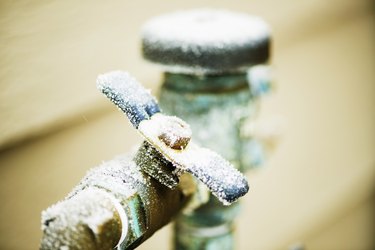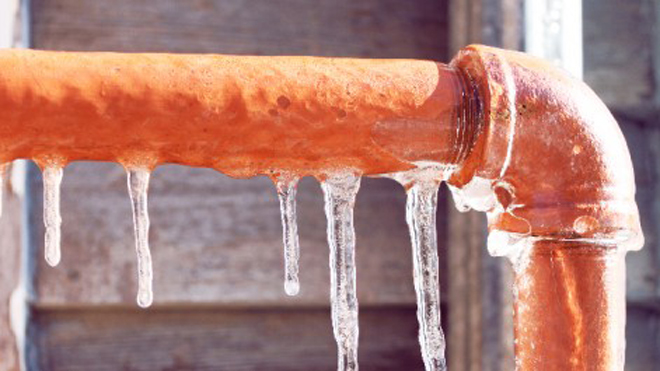They are making a number of great annotation about Preventing and dealing with frozen pipes in general in this content down below.

Winter can ruin your pipes, specifically by freezing pipes. Here's just how to stop it from occurring and what to do if it does.
Introduction
As temperatures drop, the danger of icy pipes rises, possibly leading to costly fixings and water damages. Comprehending just how to prevent frozen pipes is critical for house owners in chilly climates.
Prevention Tips
Protecting prone pipes
Wrap pipelines in insulation sleeves or use warmth tape to protect them from freezing temperature levels. Focus on pipelines in unheated or exterior locations of the home.
Home heating strategies
Maintain interior areas effectively heated, specifically locations with plumbing. Open closet doors to allow cozy air to circulate around pipelines under sinks.
Just how to recognize icy pipes
Search for reduced water circulation from faucets, uncommon smells or sounds from pipelines, and visible frost on subjected pipes.
Long-Term Solutions
Structural adjustments
Think about rerouting pipelines far from exterior walls or unheated locations. Include extra insulation to attic rooms, basements, and crawl spaces.
Upgrading insulation
Purchase top notch insulation for pipelines, attic rooms, and wall surfaces. Appropriate insulation helps keep constant temperatures and decreases the danger of frozen pipelines.
Securing Exterior Pipes
Garden hose pipes and outdoor faucets
Separate and drain garden tubes before winter season. Install frost-proof spigots or cover outdoor taps with insulated caps.
Recognizing Icy Pipelines
What causes pipelines to freeze?
Pipes ice up when subjected to temperature levels listed below 32 ° F (0 ° C) for prolonged periods. As water inside the pipelines freezes, it expands, taxing the pipeline walls and potentially causing them to break.
Dangers and damages
Icy pipelines can result in water supply disturbances, home damages, and costly repair work. Burst pipes can flooding homes and create comprehensive architectural damages.
Indicators of Frozen Pipes
Determining icy pipes early can prevent them from rupturing.
What to Do If Your Pipes Freeze
Immediate actions to take
If you suspect icy pipelines, keep taps open up to alleviate pressure as the ice thaws. Utilize a hairdryer or towels taken in warm water to thaw pipelines slowly.
Conclusion
Protecting against frozen pipelines calls for aggressive procedures and quick responses. By understanding the reasons, indications, and preventive measures, property owners can protect their plumbing throughout cold weather.
5 Ways to Prevent Frozen Pipes
Drain Outdoor Faucets and Disconnect Hoses
First, close the shut-off valve that controls the flow of water in the pipe to your outdoor faucet. Then, head outside to disconnect and drain your hose and open the outdoor faucet to allow the water to completely drain out of the line. Turn off the faucet when done. Finally, head back to the shut-off valve and drain the remaining water inside the pipe into a bucket or container. Additionally, if you have a home irrigation system, you should consider hiring an expert to clear the system of water each year.
Insulate Pipes
One of the best and most cost-effective methods for preventing frozen water pipes is to wrap your pipes with insulation. This is especially important for areas in your home that aren’t exposed to heat, such as an attic. We suggest using foam sleeves, which can typically be found at your local hardware store.
Keep Heat Running at 65
Your pipes are located inside your walls, and the temperature there is much colder than the rest of the house. To prevent your pipes from freezing, The Insurance Information Institute suggests that you keep your home heated to at least 65 degrees, even when traveling. You may want to invest in smart devices that can keep an eye on the temperature in your home while you’re away.
Leave Water Dripping
Moving water — even a small trickle — can prevent ice from forming inside your pipes. When freezing temps are imminent, start a drip of water from all faucets that serve exposed pipes. Leaving a few faucets running will also help relieve pressure inside the pipes and help prevent a rupture if the water inside freezes.
Open Cupboard Doors
Warm your kitchen and bathroom pipes by opening cupboards and vanities. You should also leave your interior doors ajar to help warm air circulate evenly throughout your home.

I recently found that page about How To Avoid Freezing Pipes while doing research the search engines. So long as you enjoyed reading our blog posting kindly don't forget to pass it around. I truly appreciate your readership.
Call Today
Comments on “Ways to Keep Pipes from Freezing Issues: Essential Guidance”